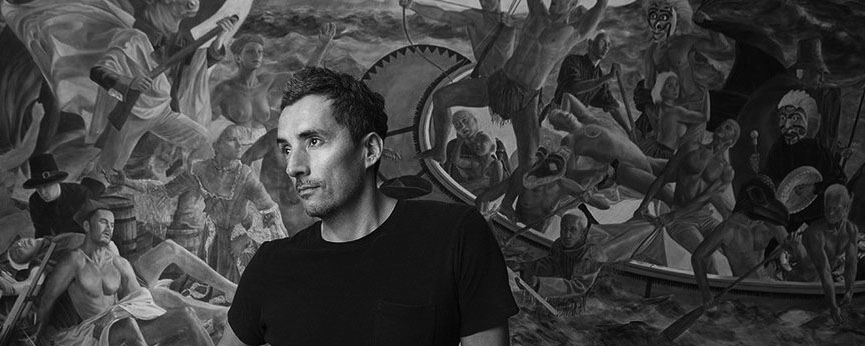INQUIRE: Experts Talk Diversity + Inclusion in Arts Programming
We asked five arts industry leaders to share their insights on the advancement of diversity + inclusion in the arts.

MPMG ASKED CULTURE LEADERS:
In your opinion, what is one tactic an arts organization can institute today to ensure their programming reflects a multitude of voices?
Cameron Mackenzie (Artistic + Executive Director, Zee Zee Theatre)
You need to know a multitude of people. You need to build deep, meaningful and mutually beneficial relationships with artists, patrons, donors and potential board members of very different backgrounds and experiences than you have yourself. This takes a long time and there is no quick fix.
One way to start this process would be to take an artist you don’t know out to lunch. On you! Ask them questions and listen. What are they working on? Who are they working with? What and who inspires them? What stories and issues of the day are important to them? What barriers do they experience engaging with your organization? Find out what they have coming up that you can attend and go, but buy tickets. Offer them free tickets to anything you have coming up and remind them of this closer to the time. Ask them to submit the next time you have a call for new plays, or auditions or when you are looking for new board members etc. If they don’t, reach out to them at that time again and offer another lunch. As an organization you should be putting in more time, effort, energy and resources to build these relationships than these individuals can at this early stage.
Bonnie Sun (Senior Marketing + Communications Manager, Museum of Anthropology)
As a marketing and communications professional, I’m not directly responsible for programming, but I believe that all arts administrators play important roles in creating and fostering an inclusive, diverse and accessible community, starting within our own organizations. We should ask ourselves: do our current hiring practices and workplace cultures reflect the diversity that we find in our audiences and general communities? If programming is to reflect a multitude of voices, so too should the workforce in the arts sector. Bringing different staff with different professional and lived experiences to the table, where strategic and leadership decisions are made, can greatly influence programming. I would like to encourage meaningful, deliberate, regular opportunities for a diversity of staff voices to be amplified, not only across departments, but across hierarchy and seniority.
Ilter Ibrahimof (Artistic Director, Fall for Dance North)
I would say the most important tactic to diversify an arts organization’s programming – besides the complete, utter, and genuine organizational dedication to this vital mission – is research. Programmers must find ways to go beyond their comfort zone and push the limits of their artistic investigation. There are many ways this can be achieved. One can make the effort to travel to at least one national or international conference or showcase platform they’ve never been before. One can schedule a time to have frequent check-ins with other programmers and producers that they trust to get regional updates on what’s happening around the world. Using the comfort and magic of some of the latest technology, one can set up Google news alerts or similar services to receive regular updates on what other arts organizations are up to. No matter what the methodology is, there are many creative (and inexpensive!) ways to carve out more time and resources to stretch our curiosity and make sure our programming reflects the world we live in.
Heather Redfern (Executive Director, The Cultch)
An organization needs to be responsive to the entire community it serves, not just a single demographic. That requires introspection and planning for change throughout the organization. When it comes to programming there are two quick checks you can make. At the very least, make sure at least 50% of your program has a female identifying person as the lead creative and make sure your programming is reflective of the make-up of your community. For example, in Vancouver, more than half of the residents identify as having a non-European background – ensure your programming serves them.
Meredith Potter (Producer + General Manager, Peggy Baker Dance Projects)
I think the question here is setting us off on the wrong foot, because ensuring that your organization is inclusive – and that your work reflects a multitude of voices – needs to be a strategic, leader-driven effort. There are many tactics that can help achieve that larger, strategic directive – from social media takeovers by members of the cast and creative team, to targeted training and professional development that advances artists from equity-seeking communities. But without inclusion and diversity being core values of an organization, these tactics are going to come off as just that – tactics. Genuine efforts to include marginalized artists have an authenticity that rises above tokenism, and speak to the company’s goals of promoting empathy between artists and audiences through sharing art. At the core of her body as words is Peggy’s ongoing exploration of non-traditional images of women, and gender representation. She has cast dancers who have worked with the company previously, as well as performers who bring diverse lived experiences to their artistry, and unique perspectives to this work.
Photo Credits
Feature Photo: Kent Monkman by Samuel Engelking, NOW Magazine.


